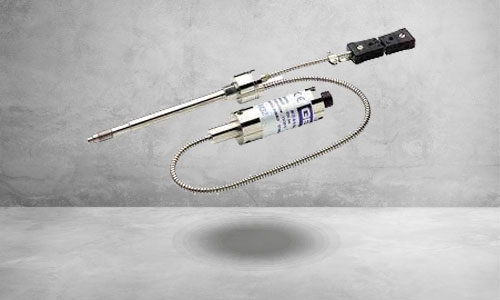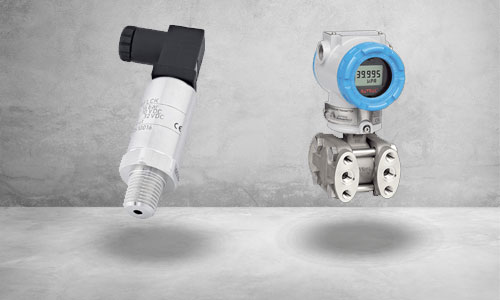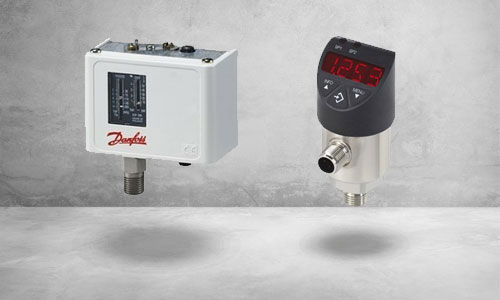Pressure Sensor [Pressure Transducer, Pressure Transmitter, Pressure Switch, Pressure Gauge, Difference between all Terms]
In most industrial processes, control, detection, and measurement of pressure are very important. A pressure sensor is a comprehensive term used to describe any instrument that can detect and/or measure pressure. A pressure sensor is an instrument that detects a force exerted on a surface (pressure) and converts an mechanical pressure input in gasses or liquids into an electrical and industry-standard signal.
This sensor is made of a pressure-sensitive element that can measure, detect or monitor the pressure and electronic components to convert the information into an electrical output signal.
Thus, the applied pressure, which is mechanical, is converted by the pressure sensor into electrical signal that is displayed on the device display or sent to the control room.
A pressure sensor works based on physical reaction to applied pressure. The sensor measures the relative changes electrically and uses phenomena such as changes in capacitance, changes in the ohmic resistance of a strain gauge, and the piezoelectric element.
All of these changes are proportional to the amplitude of the deflection after pressure. Pressure sensors are widely used in a range of industries, including the automotive industry, biomedical instrumentation, aviation, and the marine industry.
These sensors can also be used to measure other parameters indirectly. In general, the pressure sensor is a universal term that includes all pressure transducers, pressure transmitters, pressure gauges, and pressure switches. All transducers, transmitters, pressure gauges, and pressure switches are a kind of pressure sensor.
Pressure Transducer
A Transducer is an electromechanical device that produces a continuous voltage output across a high-impedance load that is proportional to the pressure change.
In other words, a transducer is a pressure sensor that provides a millivolt (such as 2mV per V, 10mV per V, or 0-100mV) or non-amplified output and has the ability to amplify the output signal.

This sensor can increase the output voltage to 5 or 10 volts. This output voltage can be millivolts or volts. Therefore, pressure transducers are generally divided into two categories:
- Pressure transducer with millivolt output
- Pressure transducer with voltage output
Pressure transducers applications:
- Flow
- Airspeed, and level
- HVAC
- Vehicles
- Pump systems
- Altitude
Pressure Transmitter
A pressure transmitter is very similar to a pressure transducer, but instead of a voltage signal, it produces a current signal through a low-impedance load.
In other words, the pressure transmitters convert the voltage output of the sensor into an electric current signal, which is usually designed to connect to a standard 4-20 mA current loop And has 2 or 4 wires.

Pressure Transmitters can protect themselves against ambient noise so they can be used when sending a signal over relatively long distances. They are widely used in industrial control processes.
Pressure Switch
Unlike pressure transducers and transmitters, which produce an electrical signal in proportion to all pressure changes, a pressure switch is a device that is able to detect changes in fluid pressure and has an electrical switch that can open or close an electrical contact at a certain pressure (predetermined setpoint).
In other words, as soon as the fluid pressure increases or decreases from the predetermined setpoint (depending on the type of pressure switch), the switch is triggered and changes the state of the switch contact from open (NO) to closed (NC) or vice versa.

The predetermined setting point can also be either fixed or adjustable.
Depending on the design and application, mechanical or electronic switches can be used. Pressure switches have a wide range of industrial and residential applications such as:
- HVAC systems
- Well pumps
- Vehicles
- Gas compressors
- Furnaces
Pressure Gauge
A pressure gauge or pressure manometer is a device for measuring and displaying the pressure of fluids (liquids and gasses) relative to the atmospheric pressure or the ambient pressure. In other words, atmospheric pressure is considered a reference pressure.
Pressure gauges are generally divided into two categories:
- Analog Pressure Gauges
- Digital Pressure Gauges
Pressure gauges are widely used in various industries including blood pressure measurement and tire pressure monitors.

Difference between all Terms
There are many different types of instruments in the pressure sensing industry. The terms pressure sensor, pressure transducer, pressure transmitter, and pressure switch are usually used interchangeably.
They are similar in the way that they provide a continuous signal related to the amount of pressure that the device is measuring and usually differ in the type of output signal.
Transmitters and transducers actually do the same work, the main difference is the type of output signal. The transducer sends the output in volts or millivolts, but the transmitter sends the signal in mill amperes and has a higher power consumption than a variety of transducers which are not suitable for battery-powered devices.
If the electrical connections in the process are short, such as in a laboratory or inside an electronic enclosure, a pressure transducer is more desirable because the electromagnetic interference affects the transducers more. And unlike a transmitter or transducer that can convert all pressures in its range, a pressure switch operates at a specific set of pressures.
| Pressure Transducer | Pressure Transmitter | Pressure Switch | Pressure Gauge |
| They are very suitable for places where the connection between the sensor and the bridge can be short | Long communication distance (up to 100m). | Detection of pressure changes in fluids and operates at a specific set of pressures when a certain pressure level is exceeded | The pressure gauge verify the relationship between a pair of input and output |
| It has low power consumption. | Low sensitivity to noise. | They can operate without a power supply. | The accuracy of the pressure gauge is poor, |
| For converting pressure values into voltages across a high-impedance load | It has a higher power consumption than different types of transducers. | The output of the pressure gauge is a scale indication | |
| The transducer sends an electrical signal in volts or millivolts. | For converting pressure values into currents (generally 4-20 mA) across a low-impedance load. | ||
| The pressure transmitter sends an electrical signal in milli amperes |
Please refer to other pressure sensor articles for more information:
An Eye-Opening Guide To Pressure sensor Types: Everything You Need To Know
Introducing Any Pressure Sensor Use You Might Need
Resolution, Sampling rate, Response Time of Pressure Sensors
Accuracy of Pressure Transmitters
Measuring Principle of Pressure Sensors
Recent Posts
-
Booster Pump Troubleshooting and Maintenance: How to Fix and Prevent Common Issues
1. Introduction Imagine turning on your faucet only to be greeted with a weak trickle of water when …22nd Apr 2025 -
Energy-Efficient Booster Pumps: Selection and Tips for Maximizing Performance
1. Introduction Imagine never having to deal with fluctuating water pressure, noisy pumps, or skyroc …19th Apr 2025 -
Booster Pumps for Sustainable Water Systems: Irrigation and Rainwater Harvesting Solutions
1. Introduction Water scarcity is no longer a distant threat—it’s a reality affecti …16th Apr 2025

![Pressure Sensor [Pressure Transducer, Pressure Transmitter, Pressure Switch, Pressure Gauge, Difference between all Terms] Pressure Sensor [Pressure Transducer, Pressure Transmitter, Pressure Switch, Pressure Gauge, Difference between all Terms]](https://cdn11.bigcommerce.com/s-sgprcd6/images/stencil/1193x795/uploaded_images/pressure-sensors.jpg?t=1650442667)


